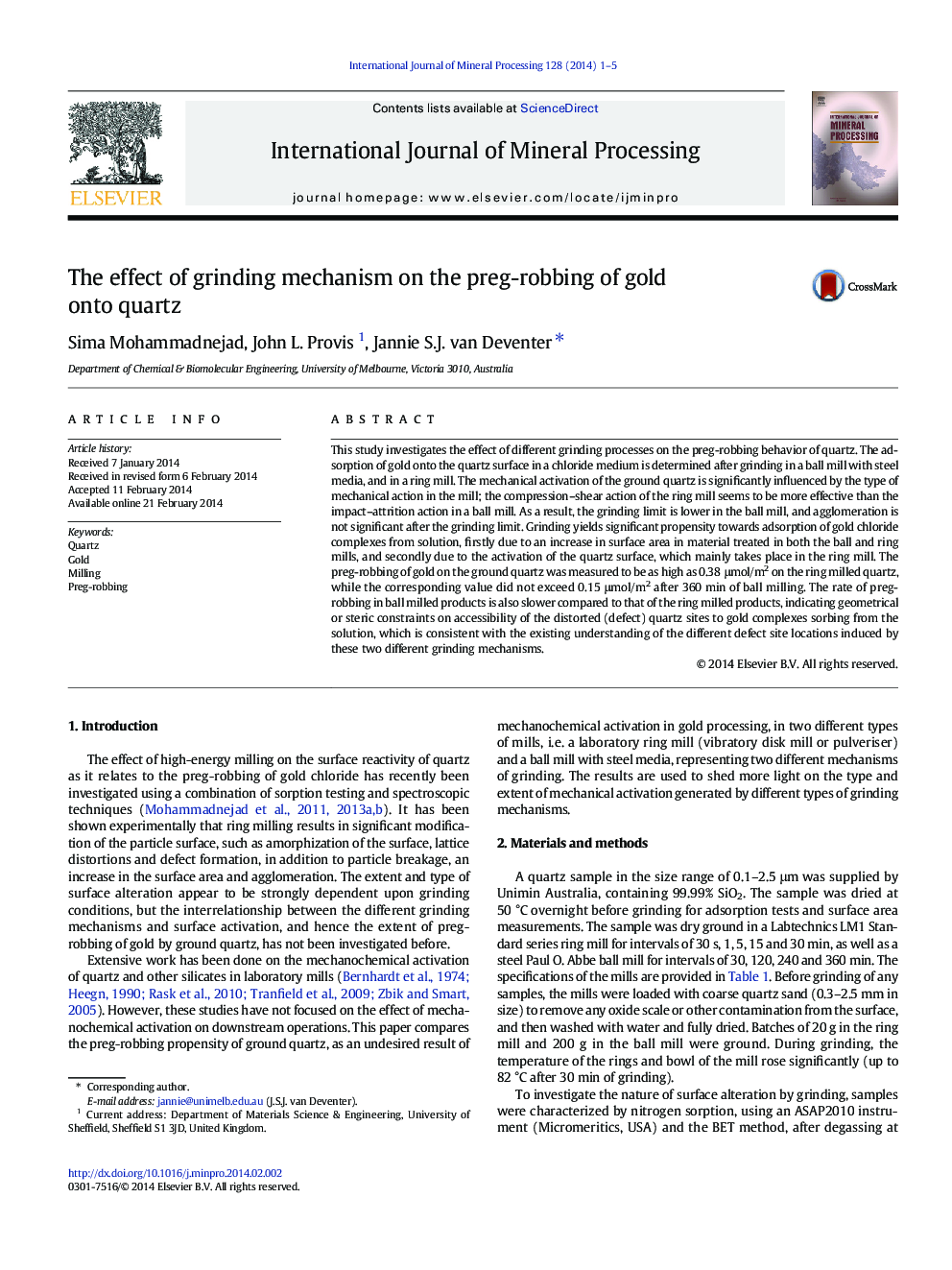| Article ID | Journal | Published Year | Pages | File Type |
|---|---|---|---|---|
| 214032 | International Journal of Mineral Processing | 2014 | 5 Pages |
•Mechanical activation during grinding enhances gold adsorption onto quartz surfaces.•Ground quartz adsorbed more gold chloride when using a ring mill than a ball mill.•Compression–shear gives more mechanical activation than impact–attrition grinding.•The ring mill results in more lattice defects on the exterior particle surface.•The ball mill causes lattice defects into the interior of the quartz particles.
This study investigates the effect of different grinding processes on the preg-robbing behavior of quartz. The adsorption of gold onto the quartz surface in a chloride medium is determined after grinding in a ball mill with steel media, and in a ring mill. The mechanical activation of the ground quartz is significantly influenced by the type of mechanical action in the mill; the compression–shear action of the ring mill seems to be more effective than the impact–attrition action in a ball mill. As a result, the grinding limit is lower in the ball mill, and agglomeration is not significant after the grinding limit. Grinding yields significant propensity towards adsorption of gold chloride complexes from solution, firstly due to an increase in surface area in material treated in both the ball and ring mills, and secondly due to the activation of the quartz surface, which mainly takes place in the ring mill. The preg-robbing of gold on the ground quartz was measured to be as high as 0.38 μmol/m2 on the ring milled quartz, while the corresponding value did not exceed 0.15 μmol/m2 after 360 min of ball milling. The rate of preg-robbing in ball milled products is also slower compared to that of the ring milled products, indicating geometrical or steric constraints on accessibility of the distorted (defect) quartz sites to gold complexes sorbing from the solution, which is consistent with the existing understanding of the different defect site locations induced by these two different grinding mechanisms.
